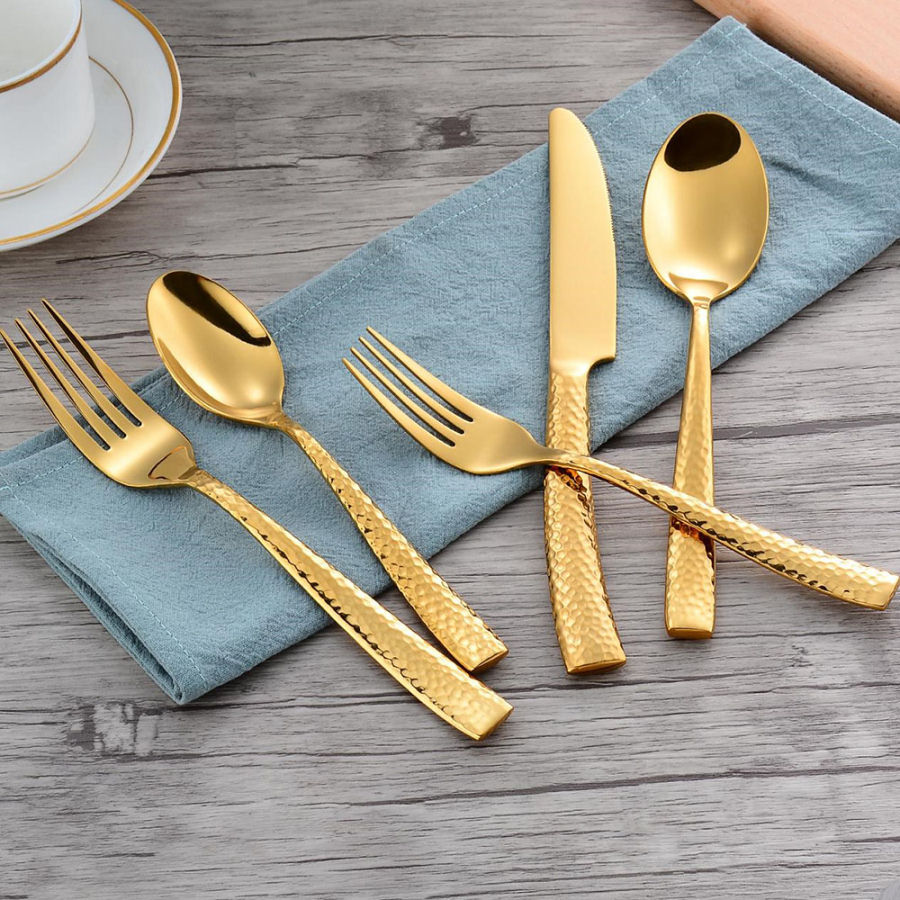Maintaining the pristine condition of our dinnerware is important for any dining experience. One common concern is the potential for scratching caused by rough flatware. However, there is a range of flatware options available that protect your delicate dinnerware from unsightly scratches. In this article, we will explore the qualities that make certain flatware scratch-free and provide practical recommendations to help you choose the perfect set.
◎ Material Matters: The material from which flatware is made plays a significant role in whether it can scratch or not. Here are some materials to consider, as they are known for their scratch-resistant properties:
a) Stainless Steel: Stainless steel flatware is widely recognized for its durability, resistance to corrosion, and resistance to scratching. Opt for flatware made of 18/10 stainless steel, which contains 18% chromium and 10% nickel. This combination ensures long-lasting scratch protection.
b) Titanium Coated Flatware: Another excellent choice to avoid scratches is flatware with a titanium coating. Titanium creates a hard and protective layer that makes the utensils resistant to scratches, as well as staining or fading over time.
c) Bamboo or Wooden Flatware: For an eco-friendly option, consider using bamboo or wooden flatware. These organic materials offer enough gentleness to prevent scratching on most dinnerware surfaces.
◎ Coating and Finishes: Beyond the material, the protective coating or finish on your flatware can also contribute to its scratch-resistant properties. Look for the following types:
a) Mirror Finish: Flatware with a mirror finish is highly polished and smooth, thus minimizing the risk of scratching. This finish is achieved by buffing the stainless steel to create a mirror-like reflective surface.
b) Satin Finish: Satin-finished flatware has a brushed appearance, which reduces the visibility of any small scratches that may occur during regular use. The slightly rough texture of this finish also minimizes contact with the dinnerware.
c) PVD Coating: Physical Vapor Deposition (PVD) coating is a durable and scratch-resistant protective layer applied to flatware. This hardwearing coating protects your utensils from scratches and adds a stylish element to your table setting.
◎ Utensil Design: The design of the flatware itself can influence its scratch resistance. Consider the following features when choosing utensils:
a) Rounded Edges: Flatware with rounded or smoothed edges is less likely to cause scratches when in contact with dinnerware. Look for sets that prioritize comfort and safety in their designs.
b) Weight and Balance: Opt for well-balanced flatware that feels substantial in hand. Utensils that are too light can bounce against your dinnerware, increasing the risk of scratching in the process.
Conclusion: Preserving the integrity of your dinnerware is essential, and choosing scratch-free flatware can help achieve this goal. By selecting materials such as high-quality stainless steel or titanium coatings, and considering finishes like mirror or satin, you can safeguard your dinnerware from unwanted scratches. Additionally, focusing on rounded edges and well-balanced designs can further enhance your dining experience. With the right set of scratch-free flatware, you can enjoy your meals without worrying about damaging your beloved dinnerware.

Post time: Oct-09-2023




